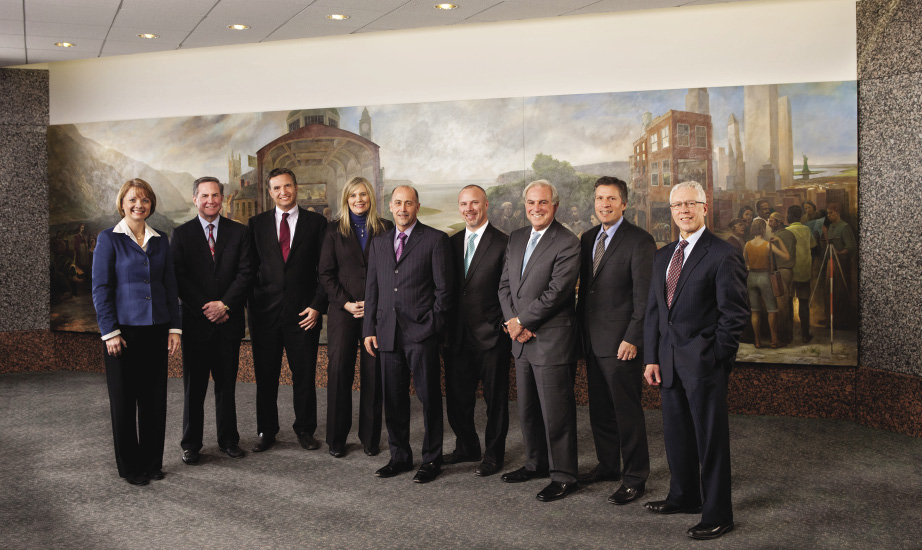
WellPoint’s Executive Team
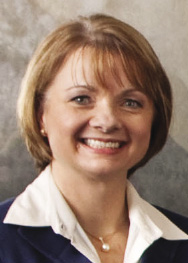
Angela Braly
An Interview with Angela F. Braly, Chair, President, and Chief Executive Officer, WellPoint, Inc. and Lori Beer, Dr. Harlan Levine, and Randy Brown
Editors’ Note
In June 2007, Angela Braly was named President and Chief Executive Officer and she assumed the role of Chair of the Board in March 2010. Prior to becoming CEO, Braly served as Executive Vice President, General Counsel and Chief Public Affairs Officer for WellPoint. Braly was previously President and CEO of Anthem Blue Cross and Blue Shield in Missouri. She joined Anthem Blue Cross and Blue Shield in January 1999 as General Counsel after serving for several years as a lawyer in private practice. Braly serves on the Board of Directors of Procter & Gamble, the Blue Cross Blue Shield Association, and the National Institute for Health Care Management. She received her Juris Doctor from Southern Methodist University School of Law and her undergraduate degree from Texas Tech University.
Company Brief
WellPoint, Inc. is one of the nation’s largest health benefits companies, with approximately 34 million Americans nationwide covered through its affiliated health plans. The company offers leading health benefits plans as well as specialty products and services designed to provide quality and value to its customers. WellPoint primarily does business as Anthem Blue Cross, Anthem Blue Cross and Blue Shield, Blue Cross and Blue Shield of Georgia, or Empire Blue Cross Blue Shield. WellPoint (www.wellpoint.com) also serves customers throughout the country as UniCare.
How have you remained strong and grown in these challenging times?
Our consumer brand, which is how most people know us, is Blue Cross Blue Shield, and the Blue Cross brand is synonymous with health care security and benefits, so it has an incredibly important legacy of taking care of the customer.
As part of that, we serve one in nine Americans who carry around one of our cards. The Blue Cross system overall has 100 million members.
So we have a great foundation for caring for our members. We have great networks and we’ve delivered excellent service. We’re a mission driven organization and that comes through in our interactions with the customer.
Where will growth come from?
There are about one million members who will age into Medicare every year between now and 2030 across the states in which we operate. We also recognize that with health care reform, even more will become eligible for Medicaid. As health care reform is fully implemented, there will be an estimated 30-plus million people who are currently uninsured who will gain eligibility and receive subsidies to get their health insurance from us through an exchange.
We have diversity through all of those segments, so we expect continued growth.
How do you define health care value and how are you focused around that value equation?
In terms of value, you have to think about cost without losing focus on quality and you have to ensure that procedures, services, and pharmaceuticals are used wisely in the process.
Part of our strategy is to make sure the customer ultimately gets a benefit that is affordable. We’ve reached a crisis level when it comes to affordability, which is part of what all of the reform efforts are intended to resolve. But to resolve it responsibly, we need to make sure we’re focusing on both cost and quality.
How critical is innovation and where are the greatest opportunities for innovation in this business?
There are obvious innovations, like our partnership with IBM using Watson technology – a relational, language-based artificial intelligence device – to create the first commercial application of Watson in health care.
Health care studies have shown that evidence-based medicine is not followed as much as we would like. A RAND Study indicated that in only 55 percent of the time you seek and receive health care are you getting the evidence-based medicine that is indicated. Part of the reason it’s that low is that medicine is always changing and you can’t possibly keep up with all the latest information.
So we’re doing two “use cases”: the first is that we’re feeding our cases into Watson and it is being trained to assist our nurse case managers as they care for some of our most acutely ill members throughout the courses of their diseases.
The second use case is one in which we will partner with different physicians who will train Watson by feeding it additional real-world clinical expertise and it will then produce decision support for the physicians who are meeting the needs of our members.
So innovation is essential to creating health care value because if we can raise the use of evidence-based medicine from 55 percent to 95 percent, imagine how much more efficient and cost effective our system would be.
We have also developed a smart shopper assistance program where we help our members and their physicians “shop” the options to make sure their procedures are performed by vendors who have proven to be the highest quality and most effective at an affordable price.
So we’ve done a lot of innovative things around health care reform but there is a lot about health care that is disconnected. Part of our unique opportunity is that we’re in the center of the equation – we have the data and information about our members and the providers, and we can use that data to meaningfully improve our members’ interactions in health care.
What needs to be done to improve the public’s trust of the health care system?
Studies have shown that members like their health insurance, but they don’t necessarily have a positive reaction to the industry as a whole. So we have to continue to focus on repeatedly satisfying our customers. That will not only foster their impression of us individually, but will also link to a better appreciation of the industry overall.
Perception has been so challenging for us to turn around because we are a disciplinarian in health care and that means that we have to point out to people that there are meaningful choices that should be made. We have to change the culture of people who, for many years, have not had enough transparency in either their health care benefits or their health care delivery. We’re partly responsible for having created a program where their employer paid the bill and the end-user/consumer never saw it.
So we have focused on transparency and making sure that our members have the information that they need when they’re engaging in the health care system, that it has both cost and quality information, and that it’s accessible.
Our tool, Anthem Care Comparison, covers 102 common procedures, so if you’re going to have an MRI of your spine, you know the options for where you can go and how much it will cost, and we’re getting ready to roll out an estimator of what your percentage of that cost will be.
That transparency will create more trust among the public and our members.•
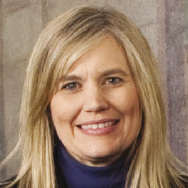
Lori Beer
An Interview with Lori Beer, Executive Vice President-Enterprise Business Services, WellPoint, Inc.
Editors’ Note
Lori Beer has more than 20 years of executive experience leading the delivery of strategic business solutions, 12 of those years with WellPoint. Her demonstrated success as CIO led her to the expanded role of chairing the Enterprise Portfolio Management Office as well as WellPoint’s Operations Council. Prior to serving as CIO, Beer held several posts with WellPoint. Beer has been recognized as a Computerworld 2011 Premier 100 IT Leader. She serves on the Board of Directors for Availity, L.L.C. and the Council for Affordable Quality Healthcare (CAQH). She earned a bachelor of science degree in computer science from the University of Dayton.
Would you provide an overview of the Enterprise Business Services unit?
Our goal is to optimize the services we provide for our customers. So we look at all the different components involved in providing a particular service – the technology required, the processes around that, the people required, etc. – and look at how we can provide that service more efficiently and effectively.
There are about 19,000 employees within Enterprise Business Services and a portion of those are in Service Operations. They are on the frontlines with our customers every day – answering phone calls from members and providers and helping them navigate the health care system.
The next area is Information Technology, which provides infrastructure and application development, but also helps use technology to drive innovation.
The third organization is Information Management. We have data in this company on more than 34 million members. Information Management turns that data into useful information and actionable insight that allows us to take better care of our members.
Another part of the organization is the Sourcing and Supplier organization, which handles procurement.
We also have an Operational Excellence team, which focuses on bringing all the pieces together. Our Enterprise Project Management office runs 300 concurrent projects implementing new strategic initiatives and Operational Excellence helps organize the project and monitors its leadership to ensure the execution of that strategic initiative.
A recent addition to our organization is our Federal Government Solutions Unit, where we provide benefits and processing services for the Federal Employee Program, and National Government Services, serving as a claims processor for Medicare. Much of this work is operationally focused, looking at how we streamline and optimize, so it made sense bringing it together with the rest of Enterprise Business Services.
My team has responsibility for executing and delivering for our customers every day, for integrating the products and services, and delivering value – that is the core focus.•
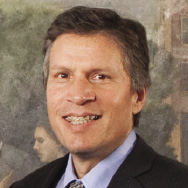
Dr. Harlan Levine
An Interview with Dr. Harlan Levine, Executive Vice President-Comprehensive Health Solutions, WellPoint, Inc.
Editors’ Note
Dr. Harlan Levine has more than 15 years of experience providing clinical health management, consultative services, and program implementation support to businesses and organizations of all sizes, across a broad range of industries. Dr. Levine earned his medical degree from the University of California, San Francisco and is board certified in Internal Medicine. Prior to pursuing his medical career, he attended Harvard College, where he received his Bachelor of Science degree in biology.
Would you highlight the capabilities of WellPoint’s Comprehensive Health Solutions (CHS)?
Comprehensive Health Solutions is a collection of capabilities and businesses that span from network contracting to medical or care management, pharmacy management, behavioral management, and EAP services. We also have a research entity.
We recognize that these capabilities need to be integrated to deliver the best health care value for our customers – that is our purpose. We have 7,000 associates who are all dedicated to improving quality, safety, and affordability.
We operate in 14 states and, from a provider contracting point of view, we have best-in-class value contracts across our network. From a care management point of view, we have accumulated a vast information asset that provides insights that have not only helped us manage care across the entire continuum from wellness to illness, but also has an analytic tool that does ongoing surveillance of the population. It looks for gaps in care where our evidence shows that, according to industry-standard evidence-based medicine, there may be opportunities to improve the care of our members. We’re able to identify that and deliver messages to both the consumer and the physician.
So we have the people, technology, and capabilities that, when you put them all together, comprise an industry leading aggregation of assets.
How critical is innovation to the culture here and how deep does it permeate?
I came here because of the uniqueness of CHS. At WellPoint, we have scale and deep local presence. That’s important because being innovative means change and change can be potentially disruptive to the market. We’re actually relevant to the delivery system and we’re able to deliver these changes.
There is also a strong sense of accountability on this team. Between the deep market presence and the culture of holding ourselves accountable for making a difference, it’s fertile ground for that innovative spirit.
People who are senior leaders in CHS are here because they feel that we’re the company in the best position to make a difference. We believe that if we don’t make changes, we’re going to fall behind in the market. And if any company can help bring affordability and quality to health care in the future, it’s WellPoint. That drives our innovation every day.•
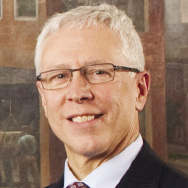
Randy Brown
An Interview with Randy Brown, Executive Vice President and Chief Human Resources Officer, WellPoint, Inc.
Editors’ Note
Before joining WellPoint in June of 2001, Randy Brown served in a variety of human resources leadership roles for RCA, GE, and Thomson Multimedia. Brown received a Bachelor of Arts degree, Summa Cum Laude, in economics from Lycoming College in Williamsport, Pennsylvania. He is a member of the Society for Human Resource Management and WorldatWork organizations.
How successful have you been in attracting and retaining the talent you need?
We feel good that our retention rate, in an industry with very high turnover, is more than 90 percent on an annual basis. Our associate engagement scores, which denote those who feel energized about being here, are also higher than industry benchmarks. So it’s not just that people stay but that they feel energized about the contribution they make.
How important are diversity and inclusion to the culture of WellPoint?
Diversity and inclusion are different but equally important. You can have a diverse workforce but there can still be a feeling that people aren’t fully included. So creating the right representation and diversity in your workforce is step one, but you also have to create a culture where people can be themselves. We want people to bring their whole selves to work to express different points of view. That richness helps us to be more aligned with and reflective of our customer base.
How has the role of an HR leader evolved and how critical is executive involvement?
The reason we’re here is to further the business of WellPoint and we do that by teaching the organization good HR practices and role-modeling them ourselves.
What I enjoy about WellPoint is that, regardless of our function, when we’re at Angela’s (Braly) table, we’re free to contribute on all matters. So I want my counterparts to contribute to the shaping of HR policy; similarly, I’m free to talk about non-HR matters and that’s what makes this leadership team vibrant and fun.
From an employment point of view, will there be a new model in the future?
Productivity is going to be key for many years to come and organizations have learned how to be more effective and efficient, and to operate with flatter organizational structures – that trend is here to stay. But what we’re all striving for is growth, because with that comes new jobs and opportunities.
While this industry does so much good, public perception of it is not always favorable. Are young people aware of the impact that can be made in this industry?
What young people understand is the huge opportunity to affect the health of the American workforce and population. People know the U.S. has obesity problems and health-related issues, sometimes driven by our own behaviors. To the extent that new entrants into the workforce know that health plans can make a difference in improving people’s lives, they get more interested.•








